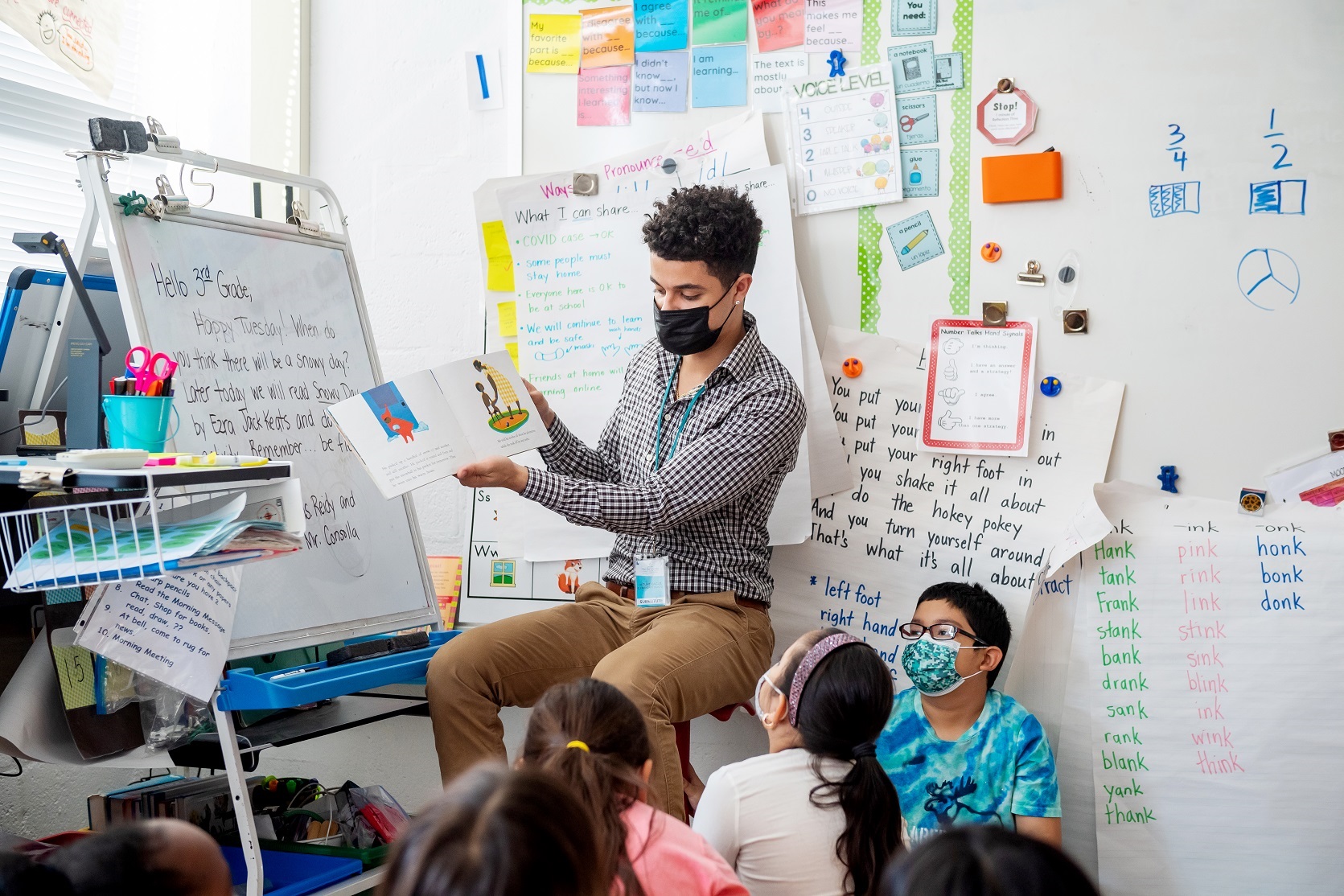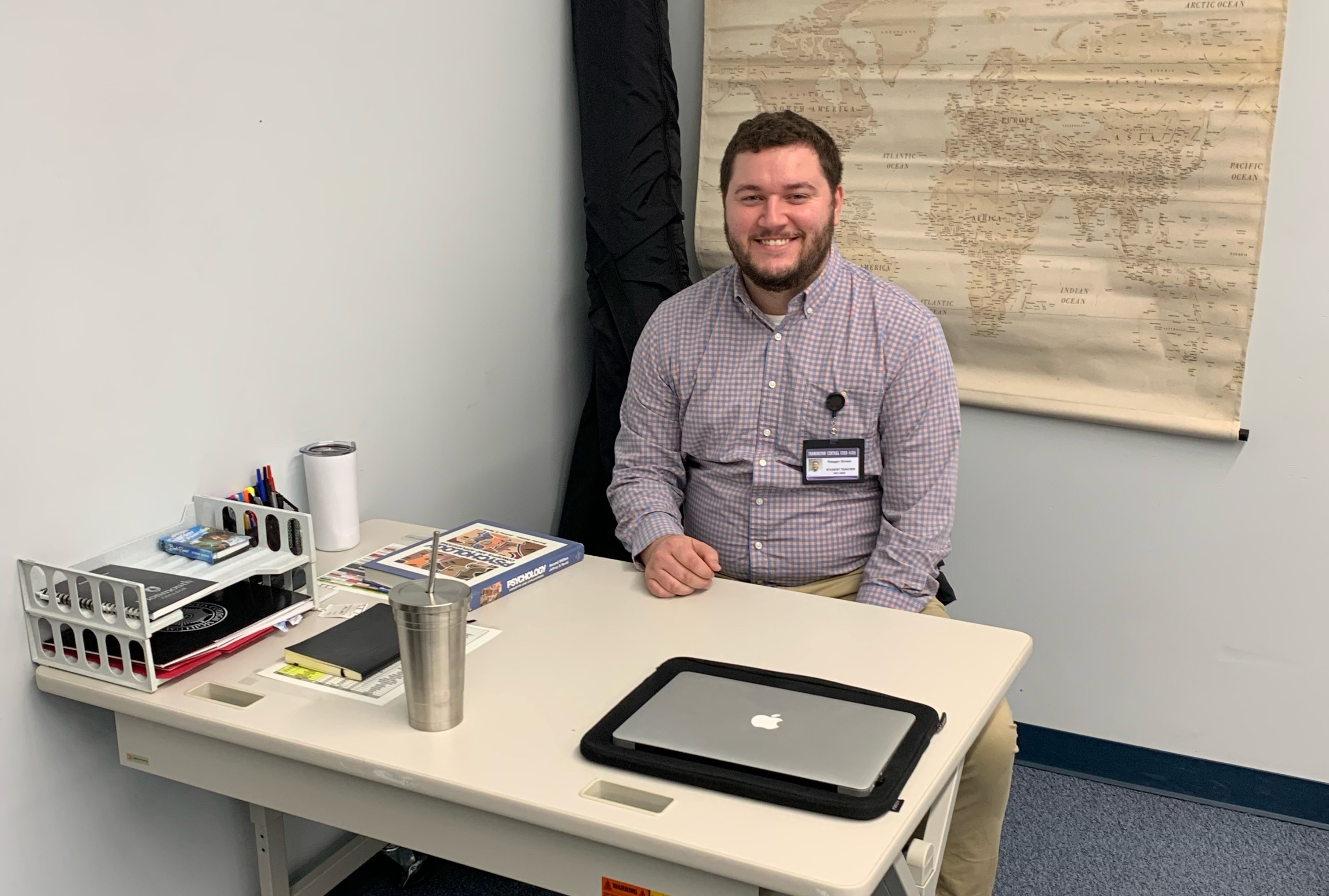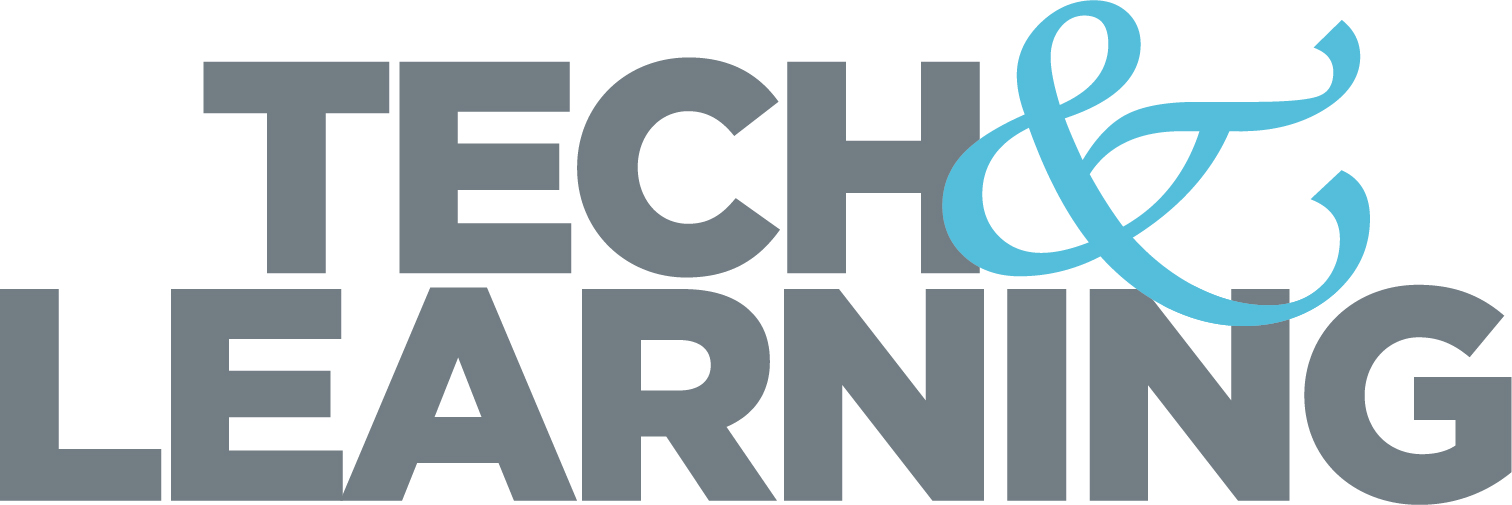How College Students Are Helping to Solve the Substitute Teacher Shortage
Some K-12 schools are turning to education majors at local colleges as short-term substitute teachers. The practice is a win-win, say those who have participated.

The first time Shepherd Coventon took over a class as a substitute teacher, she could tell the students were assessing her limits.
Coventon, a senior elementary education major at Monmouth College, had been working as a student-teacher at United West Elementary in Monmouth, Illinois, for some time, but taking the helm without the supervisory teacher there was different.
“The kids were trying to test me, they were like, ‘Okay, how much can I get away with Miss Coventon and where is her breaking point?’” Coventon says.
Across the nation, staff shortages caused by the Omicron surge have strained schools, including many that were already experiencing a substitute teacher shortage prior to the latest phase of the pandemic. To keep classes going, school leaders have had to get creative. Many districts have recruited parents as substitute teachers, and in New Mexico, National Guard members have been sent into schools to lead classes.
Another strategy for combating the substitute teacher shortage that has emerged focuses on recruiting third- and fourth-year college education students to substitute roles. It’s a win-win strategy that advocates say can help ease the substitute teaching burden, both now and going forward.
Learning On the Job

In Illinois, Coventon is able to work as a substitute teacher thanks to a new short-term substitute teacher license that was created in response to the current teaching shortage. Coventon says she was able to help her students keep learning when the teacher she was assisting had an absence, and in the process, learned a great deal herself.
“It's not as easy as it seems,” she says of leading a class of young learners.
Tech & Learning Newsletter
Tools and ideas to transform education. Sign up below.
Keegan Brown, another senior education student at Monmouth College who has also been certified as a short-term substitute teacher in Illinois, agrees. “College classes are obviously great and you learn a lot, but it's just another beast, learning in person and learning it by experience,” he says. “It's kind of like trial by fire. You just jump right in. And you make mistakes and you live with it and you learn from it. And then the next day, you just try to do better.”
Illinois is not the only place where preservice teachers are being actively recruited to step into classrooms early. Recently, Fairfax County Public Schools in Virginia began encouraging college students to apply as substitute teachers, even recruiting some who were home on winter break.
Melissa M. Goddin, principal at McNair Upper ES, says while only a few college students have subbed at her school so far, she’s excited by the potential of the initiative.
“This is opening up a new avenue for us to consider because there are so many elementary schools and high schools and middle schools here within Fairfax County, and we have so many universities nearby, where we should really tap students that are interested in education,” she says. “It really gives them that opportunity to see, ‘Is this really the career path I want to take, rather than getting in the job and then, of course, after two years, burning out, because being a teacher nowadays is really hard work.”
She adds that the college students who worked as substitute teachers have excelled when it comes to hybrid learning. “They’re very technologically savvy themselves, so they're not afraid to Zoom kids in or have kids take out computers,” she says.
Building the College To K-12 Teacher Pipeline
Thomas A. Sargent, professor and Director of Teacher Education at Monmouth College, says district and university leaders should work together to eliminate obstacles for college students interested in substitute teaching. “Anytime we put barriers in front of individuals to be teachers, that's just one more thing for our young people today to say, ‘You know what? I can do something else,’” he says.
For instance, if required paperwork is only available from 9 a.m. to 5 p.m. at a school district office that is far from a college campus, that might eliminate many well-qualified college teachers in training.
To facilitate his students working as substitutes, Sargent gathered the required paperwork from the 10 districts in his region and then created packets for his students so they could easily file the specific paperwork each district needed. Without this effort, students interested in being available to sub in all the districts would have had to go to 10 different locations and file 10 different applications. “That would take quite a bit of time,” Sargent says. “So whatever institutions can do, in collaboration with their schools and their regional authorities to collaborate, and look at ways of streamlining and putting together efficient ways to deal with things that could become barriers – that's good for everybody.”
Forming a connection with young future teachers can also serve as a potential recruitment tool for schools. Sarah Brooker, principal at Oak View ES in Virginia, says that college students who substitute teach at her school or others might be back when they graduate.
“We hope that we've made a good impression and that they've enjoyed their time with us,” she says. “We really value what they bring to our school, allowing our teachers to be able to take the needed time away that they have and know that their classes are going to be in good hands. We want to be able to establish that relationship and then be able to see it through, hopefully to a future teaching position if that's what the future should hold for them.”
Erik Ofgang is a Tech & Learning contributor. A journalist, author and educator, his work has appeared in The New York Times, the Washington Post, the Smithsonian, The Atlantic, and Associated Press. He currently teaches at Western Connecticut State University’s MFA program. While a staff writer at Connecticut Magazine he won a Society of Professional Journalism Award for his education reporting. He is interested in how humans learn and how technology can make that more effective.











